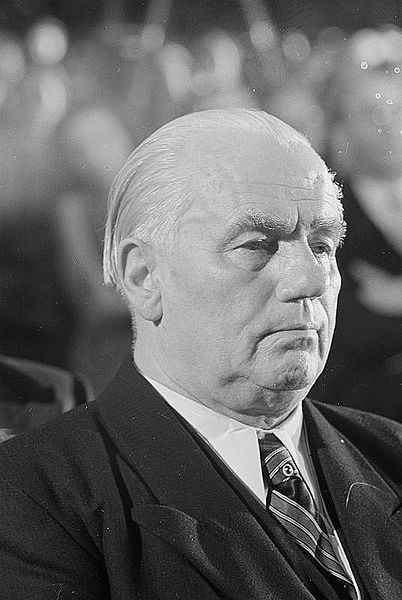President of East Germany
The president of the German Democratic Republic was the head of state of the German Democratic Republic, commonly known as East Germany, from 1949 until 1960. The office was created by the Constitution of 1949. The president of the Republic was elected by the People's Chamber (Volkskammer) and the Chamber of States (Länderkammer), the two chambers of parliament. The office was mostly ceremonial in nature. If necessary, the President of the Volkskammer acted as the president of the Republic.
President of East Germany
Wilhelm Pieck, 1950.
Pieck receiving Ho Chi Minh, President of North Vietnam (Democratic Republic of Vietnam), 1957.
Pieck receiving Nikita Khrushchev, Premier of the Soviet Union, 1959.
East Germany, officially known as the German Democratic Republic, was a country in Central Europe from its formation on 7 October 1949 until its reunification with West Germany on 3 October 1990. Until 1989, it was generally viewed as a communist state and described itself as a socialist "workers' and peasants' state". The economy of this country was centrally planned and state-owned. Although the GDR had to pay substantial war reparations to the Soviets, it became the most successful economy in the Eastern Bloc.
GDR leaders: President Wilhelm Pieck and Prime Minister Otto Grotewohl, 1949
SED First Secretary, Walter Ulbricht, 1960
Erich Honecker, head of state (1971–1989)
Chancellor of the Federal Republic of Germany (West Germany) Helmut Schmidt, Chairman of the State Council of the German Democratic Republic (East Germany) Erich Honecker, U.S. president Gerald Ford and Austrian chancellor Bruno Kreisky signing the Helsinki Act








